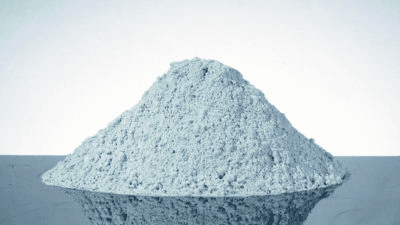- Home
- Chi siamo
- Settore
- Servizi
- Lettura
- Contattaci
L'elevato potere d'acquisto degli utenti finali darà impulso al mercato globale del cemento bianco. L'Asia Pacifico guiderà la crescita!
Autore: Himanshu Patni
18 dicembre 2021

Il mercato del cemento bianco è stato stimato intorno ai 5 miliardi nel 2020 e si prevede che mostrerà un CAGR di circa il 4% nel periodo di previsione (2021-2027). Il cemento bianco e il cemento grigio Portland sono simili tra loro in termini di processo di produzione, sebbene le materie prime differiscano in modo significativo. Tuttavia, sono presenti anche alcune differenze nel colore, nella finezza, nella resistenza e nella facilità d'uso. Il cemento bianco ha ampie applicazioni nel settore delle costruzioni come pavimenti, stuccatura di piastrelle, ecc. La rapida crescita del settore delle costruzioni a causa della globalizzazione e del cambiamento dello stile di vita delle persone sta guidando il mercato del cemento bianco.
Ad esempio, il valore della costruzione totale per tipologia di lavoro in Gran Bretagna è salito a circa il 29% nel 2019 prendendo il 2014 come anno base. Tuttavia, nel 2020 si è osservato un calo di quasi 25.000 USD Mn a causa della pandemia che ha limitato le persone a ridurre le proprie spese per i beni necessari.
Nelle nazioni in via di sviluppo come India, Brasile e Argentina, la popolazione sta migrando verso le aree urbane, il che sta guidando la crescita del settore delle costruzioni residenziali. Inoltre, l'aumento del reddito disponibile e il cambiamento dello stile di vita stanno aumentando la necessità di case decorative. Ciò sta portando ad un aumento della domanda di materiali da costruzione come il cemento bianco che viene sempre più utilizzato per rifinire le pareti interne ed esterne, alimentando la crescita del mercato del cemento bianco.
Per un'analisi dettagliata dei fattori trainanti del mercato, consultare – https://univdatos.com/report/white-cement-market/
Il nuovo coronavirus ha avuto un impatto negativo sull'offerta e sulla domanda di cemento bianco a causa della sospensione delle unità produttive e della chiusura delle frontiere per fermare la diffusione del virus. Ciò ha portato a ritardi nei progetti che hanno ulteriormente causato perdite finanziarie ai costruttori.
In base altipo, il mercato del cemento bianco è suddiviso in cemento bianco Portland, cemento bianco da muratura e altri. Il cemento bianco Portland ha una maggiore resistenza alla compressione ed è più durevole del cemento bianco da muratura. Per questo motivo, il cemento bianco ha ampie applicazioni come pavimenti riflettenti, piastrelle per pavimenti e pavimentazioni, pietra artificiale, terrazzo, boiacca per piastrelle, prodotti in calcestruzzo armato con fibra di vetro, piani di lavoro in calcestruzzo, tegole in calcestruzzo, moderazione e delimitazione del traffico, barriere spartitraffico, parapetti di ponti, pareti fonoassorbenti, muri di sostegno, costruzione di tunnel, pavimentazioni riflettenti in calcestruzzo che gli consentono di detenere una quota di mercato redditizia.
In base all'applicazione, il mercato del cemento bianco è suddiviso in architettura, pavimentazioni, stuccatura di piastrelle e altri. I vantaggi di progettazione del calcestruzzo prefabbricato architettonico sono esaltati dalla straordinaria bianchezza dei cementi bianchi Portland e dalle eccellenti proprietà termiche, dalla resistenza, dalla riduzione del rumore, dalla bassa manutenzione, dall'umidità e dalle proprietà resistenti al fuoco inerenti alla costruzione prefabbricata. Le versatili unità architettoniche in calcestruzzo prefabbricato possono essere utilizzate come pannelli murali portanti o non portanti, nonché come elementi strutturali convenzionalmente armati o precompressi. Gli elementi prefabbricati consentono un montaggio rapido ed efficiente. I pannelli prefabbricati architettonici sono ampiamente utilizzati a livello globale per un risparmio critico in termini di tempo, denaro e scopi decorativi. Ad esempio, svettando per 67 piani sopra la prestigiosa North Michigan Avenue di Chicago, Park Tower è uno degli edifici più alti del mondo rivestito con pannelli architettonici prefabbricati in calcestruzzo.
Sulla base dell'utente finale, il mercato del cemento bianco è suddiviso in residenziale e non residenziale. Il settore residenziale detiene una notevole quota di mercato, principalmente a causa del maggiore potere d'acquisto degli utenti finali. Inoltre, si prevede che il settore non residenziale crescerà in modo ragionevole a causa della crescente globalizzazione.
Richiedi un campione del rapporto consulta – https://univdatos.com/get-a-free-sample-form-php/?product_id=12620
Inoltre, il rapporto fornisce iniziative dettagliate che vengono intraprese nel campo del cemento bianco. Il mercato è classificato in regioni distinte tra cui Nord America, Europa, Asia Pacifico e Resto del Mondo. L'aumento delle spese per l'edilizia e le costruzioni sta guidando la domanda di cemento bianco in progetti residenziali e non residenziali in Cina e India. Inoltre, la crescente urbanizzazione apre la strada all'aumento delle attività di costruzione, offrendo opportunità di crescita per il mercato complessivo. Aumenta la necessità di prodotti in cemento bianco tra cui piastrelle per facciate, assi di rivestimento soprattutto in paesi come India, Giappone e Cina. Inoltre, i crescenti sviluppi infrastrutturali stanno alimentando le attività di costruzione come la costruzione di strade, cavalcavia, stazioni ferroviarie e altri. Questi fattori stanno promuovendo la crescita del settore edile e, quindi, il consumo di cemento bianco.
Segmentazione del mercato globale del cemento bianco
Approfondimenti di mercato, per tipo
• Cemento bianco Portland
• Cemento bianco da muratura• Altri
Approfondimenti di mercato, per applicazione
• Architettonico
• Pavimentazione• Stuccatura di piastrelle• Altri
Approfondimenti di mercato, per utente finale
• Residenziale
• Non residenziale
Approfondimenti di mercato, per regione
- Nord America
- Europa
- Asia Pacifico
- Resto del mondo
Profili delle migliori aziende
- Cementir Holding SPA
- Cementos Portland Valderrivas S.A.
- Cemex S.A.B. DE C.V.
- Cimsa Cement Industry and Trade Inc.
- Dyckerhoff GmbH
- Federal White Cement
- JK Cement Ltd.
- Neyriz White Cement Company
- Saudi White Cement Co.
- Ultratech Cement Ltd.
Richiedi richiamata
